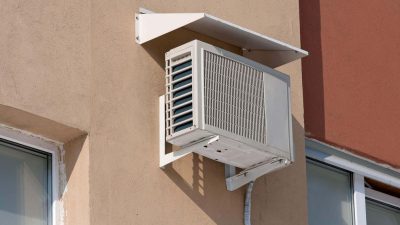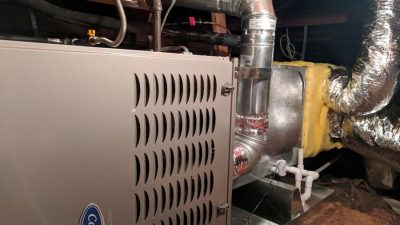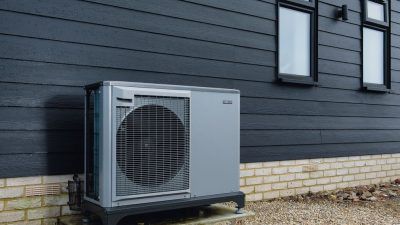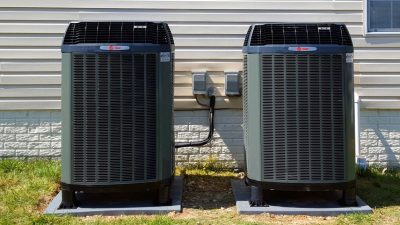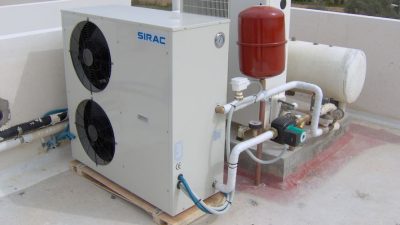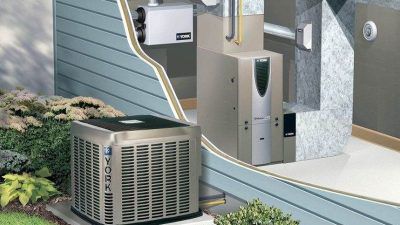Do you ever feel like your laundry is taking over your life? You’re constantly washing, drying, and folding clothes because it seems like the pile never ends. But what if there was a way to save time and energy while keeping your clothes clean? With today’s technology, that’s possible with heat pump tumble dryers!
Heat pump tumble dryers are sophisticated appliances that use advanced drying technology to get the job done quickly. Not only do they efficiently dry your clothes in less time than traditional dryers, but they also use much less energy—saving you money in the process. Plus, they don’t create excess heat or noise like other models do.
If you want freedom from laundry day blues, then a heat pump tumble dryer could be just what you need. In this article, we’ll discuss how these machines work and why they are so efficient. By the end of it, you’ll have all the knowledge you need to choose the perfect appliance for your needs!
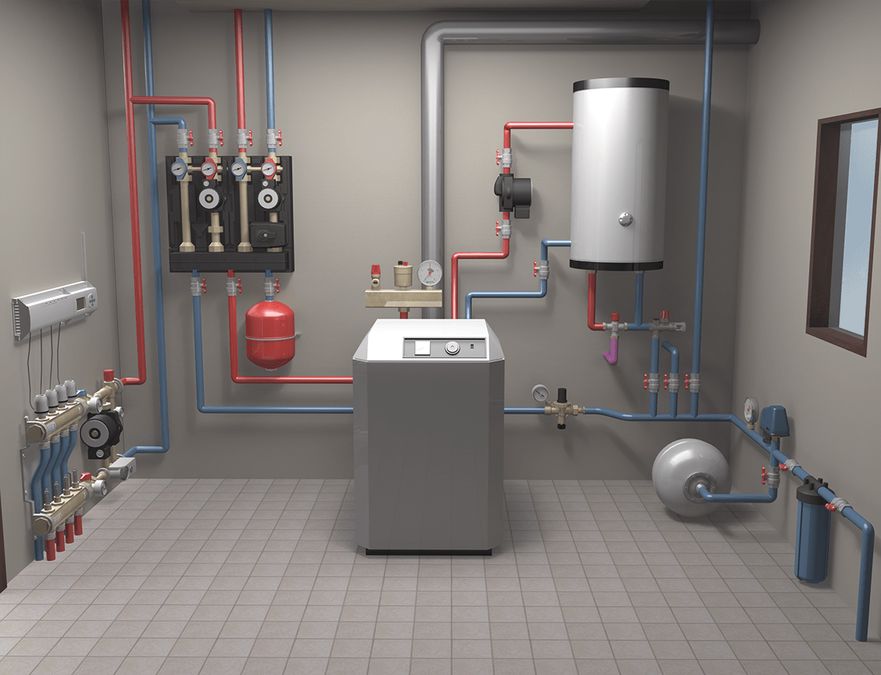
Overview
Heat pump tumble dryers are an efficient and cost-effective way to dry your laundry. Working with heat pump technology, these dryers use a closed loop system to circulate warm air through the drum to get your clothes dry. Heat pump technology incorporates a refrigerant that absorbs moisture from the laundry and releases it outside the machine, allowing you to save energy while doing your laundry. This means that your clothes will be dried quickly and efficiently without using too much energy.
The basics of heat pump tumble dryers are simple: they work by heating air inside the drum and recirculating it around the wet clothes. As the air is circulated, it absorbs moisture from the fabric and transfers it outside of the machine, where it is released into the atmosphere. The result is effectively dried laundry without having to use more energy than necessary. Heat pumps are also extremely efficient compared to traditional tumble dryers, as they require less electricity to run them.
Components Of A Heat Pump Tumble Dryer
A heat pump tumble dryer is a complex machine that works to dry clothes quickly and efficiently. It contains several components, including a compressor, condenser, evaporator, heat exchanger, and ducting. The compressor pumps refrigerant in a closed loop between the other parts of the machine. This helps to create pressure which allows the refrigerant to become both liquid and gas.
The condenser then takes this gas-liquid mix and starts the cooling process by releasing heat into the atmosphere. This cools the refrigerant down until it turns back into a liquid. The evaporator is then used to take this liquid and transform it back into a gas form by absorbing heat from inside the drum of the dryer – which holds your wet clothes.
The heat exchanger is responsible for removing this hot air from inside the drum and passing it through a series of ducts which carry it outside of your home. Here, it is cooled down using ambient air before being re-circulated back into the drum for another cycle of drying your clothes. With each cycle, more hot air gets released from inside the drum and replaced with cooler air allowing for faster drying times than conventional dryers without sacrificing energy efficiency.
How Does It Operate?
Now that we have explored the components of a heat pump tumble dryer, let’s discuss how it all works. This type of dryer is unique in that it uses a heat pump system to circulate air and remove moisture from clothes. The heat pump operation process starts with an electric heating element that heats up the air inside the drum. The hot air is then forced through the clothes, removing moisture from them and transferring it to a condenser.
As the hot air passes through the condenser, its temperature decreases and it turns into cold air. This cold air is then pushed back into the drum to repeat the cycle. This process continues until all of the moisture has been removed from your clothes and they are left dry.
Heat pump tumble dryers are incredibly efficient due to their ability to reuse heated air instead of constantly having to use electricity to generate more heat. Here’s a quick list of what makes these machines function so well:
- Heat pumps capture humidity from clothes and transfer it outside via condensers
- Electric heating elements provide hot air for drying
- Cold air circulates back into drum after passing through condenser
By using this cyclical process, these machines can effectively reduce energy consumption while still delivering excellent results. Not only do they save you money on electricity bills but they also help reduce environmental impact as they use much less electricity than conventional tumble dryers. With their silent operation, high efficiency ratings and low running costs, there is no doubt why heat pump tumble dryers are becoming increasingly popular among households around the world.
Advantages And Disadvantages Of Heat Pump Tumble Dryers
Heat pump tumble dryers have numerous advantages. The main benefit is their energy-efficiency, as they use up to 50% less electricity than conventional tumble dryers. This makes them a great choice for those looking to save money on their bills. They also have a lower environmental impact, as heat pump dryers produce significantly fewer emissions than traditional models. Another advantage is that the clothes are dried more gently and evenly, giving them greater protection from shrinkage and damage due to overheating.
Despite these advantages, there are some disadvantages too. Heat pump tumble dryers come at a higher cost than conventional models, meaning that they may not be the best choice for those on a tight budget. Additionally, as they use lower temperatures than traditional models, it can take longer to get your laundry done if you’re in a hurry. Finally, some people find the noise level of heat pump dryers to be quite high compared to other types of dryers.
Overall, heat pump tumble dryers offer numerous benefits in terms of energy-efficiency and environmental impact. However, their cost-effectiveness and noise levels should be taken into consideration before making a purchase decision.
Maintenance Tips For Heat Pump Tumble Dryers
Taking care of your heat pump tumble dryer is essential for ensuring it runs efficiently and reliably. To ensure the longevity of your machine, here are some easy tips to help keep it in great condition.
| Tip | Description | Frequency |
|---|---|---|
| Clean lint filter | Empty lint filter after each use | After every cycle |
| Clean condenser unit | Remove fluff build-up from the condenser unit | Every 6 months or so |
| Check seals and hoses | Inspect hoses and seals for cracks or damage, and replace if necessary | Every 6 months or so |
| Vacuum inside drum | Vacuum inside drum to remove any dust build-up | Once a year |
By following these steps, you can enjoy clean clothes with minimal effort. Regular maintenance will also save energy costs and reduce wear on the machine. In addition, you’ll have peace of mind knowing that your heat pump tumble dryer is running optimally. So take a few minutes out of your day to make sure your dryer gets the attention it deserves!
Conclusion
In conclusion, heat pump tumble dryers are a great alternative to traditional machines. They offer more energy efficiency and are gentler on your clothes. It’s important to keep your heat pump tumble dryer in good condition by regularly cleaning the filter and emptying the condenser tank.
Using a heat pump tumble dryer could make laundry day easier and more economical. With its efficient operation, you’ll be able to save money on your utility bills while your clothes come out feeling soft and looking great. Plus, these machines are much quieter than traditional ones, so you won’t have to deal with any loud noises when it’s running.
Overall, a heat pump tumble dryer is an excellent choice for those who want to reduce their energy consumption and save money. With proper maintenance, it can last for years and will help you save even more money in the long run. So why not consider investing in one today?

